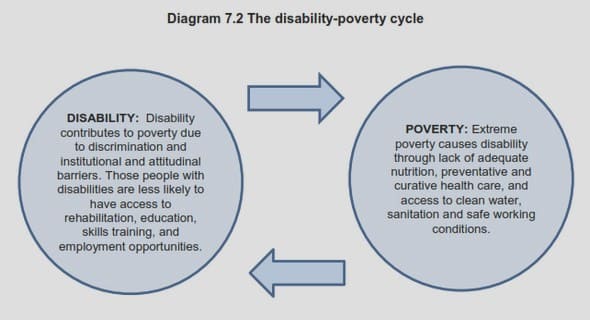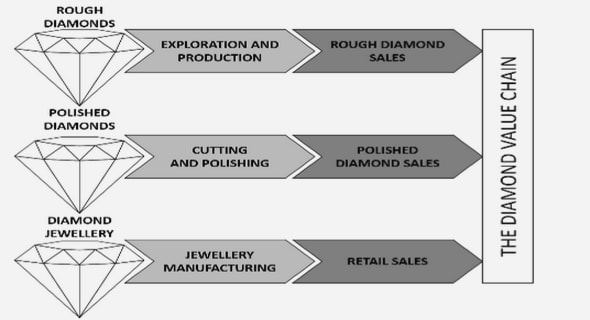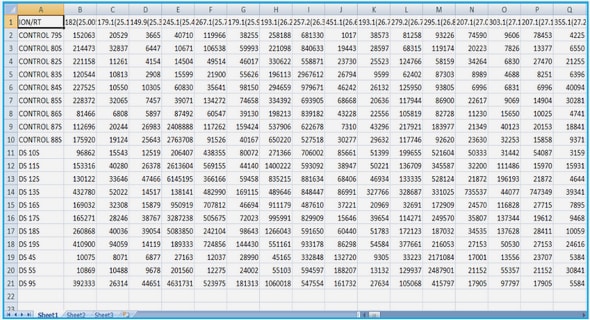Get Complete Project Material File(s) Now! »
Chapter 2: Literature Review
Forest Inventory Analysis
In 1928 the US Congress enacted the McSweeney-McNary Forest Research Act, then in 1974 created the Forest and Rangeland Renewable Resources Planning Act.
These acts were implemented to monitor the condition, extent, volume of growth, and health of the United States’ forests and the impacts of management practices upon them.
These acts and their latter revisions are the basis for the Forest Inventory Analysis (FIA) Program (Patrick et al 2001). “FIA is the Nation’s forest census (USDA FIA http://fia.fs.fed.us/about.htm).” The FIA program is unique in that it is currently the only such program that monitors forest ecosystems across all ownerships (SAF 2000). This is important because it sets a standardization for monitoring that previously did not exist. FIA data are of prime importance to policy making by federal, state, and local governments. FIA data is influential in analysis that affects both economical and ecological decision policies at all levels of government. The use of the data is not limited to public forest planning but is also of great importance to the private industry. Having the most up-to-date and correct forest area estimates helps in such policy decisions as strategic planning for the timber industry, reporting national forest carbon budgets, and assessment of ecological and economic change resulting from natural disasters (SAF 2000).
Previously, the FIA program was conducted on a periodic basis, sampling states sequentially in a cycle. As part of the 1998 Agricultural Research, Extension and Education Reform Act, the US Forest Service has developed a strategic plan for a continuous inventory for the program, in which every state is sampled annually. It is a three-phase initiative that is applied to monitoring across all forest ownerships (SAF 200).
The first phase defines the strata. The second phase focuses on tree measurements while the third phase deals with forest health. Sampling one plot per some number of acres makes up the second and third phases. Phase two has a sampling intensity of one plot per 6,000 acres while the third phase has a sampling intensity of one sample per 100,000 acres (SAF 2000).
Originally, Phase I strata were defined using a grid of points draped over aerial photos. The photos were mostly at 1:40,000 scale from the National Aerial Photography Program (NAPP). A classification of forest or nonforest was given to each point in the systematic grid based upon photo interpretation (Wayman et al 2001). Reams and Van Duesen (1999) cited two inefficiencies of using this method for collecting data to define strata; it is both time consuming and costly. Wayman et al (2001) have researched the use of satellite remote sensing compared to photo interpretation. They found the use of satellite remote sensing to be “comparable” in defining Phase I estimations, yet believed that these procedures produced overestimations of forest area (Wayman et al 2001).
Using satellite imagery to monitor forest quantity is not an easy task. There are fundamental differences between spectral classes, data from the satellite; and information classes, those defined by humans that the spectral data are placed into (Jensen 1996). Satellite data provide land-cover (spectral) information, but what is needed is land-use information (human defined) (Northcutt 1991). Many times these are not one and the same, and this where the difficulty occurs in defining forest and nonforest areas.
Multiple variables must be taken into account when classifying forest and nonforested areas. The FIA program has set definitions it uses as guides to do this. These definitions standardize what is a “forested area” and what is a “nonforested area”. Examples of difficulties in classification occur in determining harvested areas in a forested tract, from those areas that are agriculture or another form of human impact. Another source of difficulty is when there is a high amount o forest/nonforest variation. Examples of such areas will be introduced later on in the study.
Ancillary Data
Jensen defines ancillary data as:
Any type of spatial or nonspatial information that may be of value in the image classification process, including elevation, slope, aspect, geology, soils, hydrology, transportation networks, political boundaries, and vegetation maps (Jensen, 1996, p. 244).
This is by no means an exhaustive list. Ancillary data is used to improve image classification. Analysts can choose to use ancillary data in any of three stages of image classification: 1) preclassification scene stratification, 2) post-classification sorting, and 3) during classification through modification of a priori probabilities (Hutchinson 1982, Mesev 1998). Hutchinson found that preclassification stratification and postclassification sorting were the most efficient, but were limited to their decision rules. An advantage of post-classification sorting is the fact it is done after classification and only deals with « problem classes » i.e. those areas that would be affected by the decision rules (Hutchinson 1982).
The post-classification technique is used to refine the class assignment of a pixel after its initial classification. Hutchinson (1982) applied this method in his classification of a desert scene in Flynn, California. He used slope data to separate steep, sunny, dunes from flat playa surfaces. Many other studies have incorporated the use DEM data in post-classification (Ricchetti 2000) and (Eiumnoh, Shrestha 2000).
Studies conducted by Mesev (1998) and Harris et al (1995) used demographic data in the classification process. Both studies used ancillary data to improve classification in urban areas. The demographic data used by Mesev (1998) was housing density. A weighted estimator template based upon centroid distance of housing density was calculated and used in all three stages. He used the template to help in the acquisition of training data (preclassification), during classification as a component in Bayesian-modified maximum likelihood estimator, and in post-classification sorting.
Mesev (1998) used an urban mask as a post-classification sorting template. Others have successfully used the urban mask. Northcutt (1991) reported that the addition of an Urban Mask in a post-classification sort improved classification and accuracy in urban areas, especially in easily confused areas; i.e. where human impact can spectrally look like natural surfaces.
Census Data
Little research has been conducted on the practice of integrating satellite imagery with demographic data (Radeloff et al 2000). The work that has been done has been aimed primarily toward improving broad scale land cover classifications (Vogelmann et al 1998, Luman 1996).
The 2000 Census data from the US Census Bureau is one of the data layers to be used here as ancillary data. The smallest unit of measure published by the Census is the census block (US Census Bureau 2000). Census blocks are vector polygon data of varying shapes and sizes. The census block has the highest spatial resolution of all census data (Radeloff et al 2000).
Tax parcel Data
Another avenue of research is whether the addition of data above and beyond the readily available data (i.e. census data) improves accuracy and whether any improvement is significant.
Land value was chosen as a variable to measure, because it can be used across all government and zoning laws. Land value is not restricted to specific county laws. More and more municipalities are switching from hard copy to soft copy documentation and record keeping for tax parcel data. Because of up to date digital tax maps, land value was seen as the best additional variable. It is contended that areas of high land value could not be expected to be in a forest land use, because such areas would be incompatible with those of high commercial value.
Montgomery Co., Virginia tax parcel data was obtained from the Virginia Tech Library and the Blacksburg GIS Office. The Shape File of the County contained over 36,000 polygons. The associating database had upwards of 20 fields. The only fields of concern were land value and tax parcel ID.
FIA Program Definitions
Wayman et al’s (2001) results indicate that satellite derived classification, in two out of three study areas, overestimated the amount of forest area up to 2.75%. It is believed the addition of ancillary data will improve these estimations, and make them more comparable to the photo-based methodology for forest area estimates. The classifications must meet standards set by the FIA program. Below are the three definitions that are of importance in the post-classification techniques. The classification model outputs had to meet these requirements. The definitions are from the Field Instructions For Southern Forest Inventory, a manual from the US Forest Service and the Department of Agriculture.
Nonforest Land — Land that does not support, or has never supported, forests, and lands formerly forested where use for timber management is precluded by development for other uses. Includes areas used for crops, improved pasture, residential areas, city parks, improved roads of any width and adjoining rights-ofway, power line clearings of any width, and noncensus water. If intermingled in forest areas, unimproved roads and nonforest strips must be more than 120 feet wide, and clearings, etc., more than one acre in size, to qualify as nonforest land.
Forest land—Land at least 10 percent stocked by forest trees of any size, or formerly having such tree cover, and not currently developed for nonforest uses. The minimum area for classification of forest land, or subclasses of forest land is 1 acre.
Roadside, streamside, and shelterbelt strips of timber must have a width (based upon stem-to-stem distance) of at least 120 feet wide to qualify as forest land. Unimproved roads, trails, and clearings in forest areas (if not urban and other) shall be classed as forest if less than 120 feet in width.
Urban and other- Areas of intensive use with much of the land covered by man-made structures, e.g., towns, strip developments along highways, power and communication facilities, industrial complexes, and institutions. Areas include those developed for residential, industrial or recreational purposes; school yards, cemeteries, roads, railroads, airports, beaches, power lines, and other rights-of-way.
For land use classification, this includes other nonforest land areas not included in any other specified land use class. Urban and other areas do not need to meet the 120 feet wide and 1 acre in size requirement. Urban and other areas may be any shape and size.
The above definitions for “Nonforest Land” and “Urban and Other” are almost contradictory. However, the main point needs to be in the last line of the “Nonforest Land” definition. Nonforested areas need to be at least 120 ft wide and one acre in size only when intermingled in forested areas, i.e. tracts of forested land. Forest land however, must always be one acre in size anywhere it occurs. This puts one into a predicament when trying to classify an area. Are the pixels of nonforest land immersed in a forested tract or are they nonforest pixels in an area of confusion? Which definition should be applied, and how does one tell the difference in a classification? Using just the
“Urban and Other” is not a viable option for the study. The “Nonforest Land” definition is all-inclusive. It is these areas of confusion, which the addition of ancillary data is designed to help in pixel classification.
Abstract
Acknowledgements
Chapter 1: Introduction and Objective
1.1 Introduction
1.2 Objective
Chapter 2: Literature Review
2.1 Forest Inventory Analysis
2.2 Ancillary Data.
2.3 Census Data
2.4 Tax parcel Data
2.5 FIA Program Definitions
Chapter 3: Methods
3.1 Study Area
3.2 Data Sets
3.3 Software Equipment
3.4 Validation Points
3.5 Urban Mask
3.6 Kurtzinator
3.7 Clump/Eliminate.
3.8 3×3 Majority Filter
3.9 Images.
3.10 Logistic Regression
3.11 Accuracy Assessments
3.12 Image Differencing
Chapter 4: Results
4.1 Image Comparison.
4.2 Image Differencing
4.2 Logistic Regression:
4.4 Accuracy Assessments
Chapter 5: Discussion
5.1 Urban Mask and Contiguity Filters
5.2 Map Accuracy
Works Cited
GET THE COMPLETE PROJECT
Application of Ancillary Data In Post-Classification To Improve Forest Area Estimates In A Landsat TM Scene


